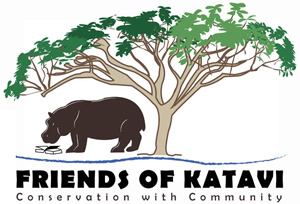aug08

 |
 |
 |
 |
 |
 |
 |
 |
 |
 |
 |
Katavi
National Park - the perl of the entire Rukwa Region - is located in the
west of Tanzania, approx. 50 km east of Lake Tanganyika in Mpanda District,
Rukwa Region and deserves more space on our website in order to inform
you.
The park is accessible via Mbeya/Sumbawanga from the South, by train from
Dar es Salaam/Tabora to Mpanda or by small aeroplanes. Katavi is the third
biggest National Park in Tanzania after Serengeti and Ruaha NP with 4471
km2.
Wildlife is rich and scenery is diverse, ranging from seasonally inundated
grassland plains in the basins of the rift valley to steep escarpments
which evolved from the parallel arm of the Central African Rift Valley,
called Rukwa Rift valley. Altitude ranges from 820m in the valley floor
to 1560m on adjacent mountains of the escarpments surrounding the Park.
Average rainfall is 927mm, rains can occur from November to April. Therefore
the best time to visit is May to December.
The vegetation is a colourful mosaic with closed to open woodlands, shrublands,
grasslands, swamps, seasonal lakes and riverine vegetation. A huge variety
of flowers, trees and grass species can be found.
The life line of the Park is the River Katuma which feeds Lake Katavi
in the north, Lake Chada and Katisunga floodplain in the centre. Lake
Chada also receives water from Kapapa River, which drains areas in the
north of Katavi NP. River Kavuu leaves Lake Chada towards Lake Rukwa,
which is outside the Park in the southeast.
Concerning wildlife the amount of butterflies, bird and mammal species
is known to surprise every visitor. Tourist numbers are still very low,
which makes the safari in Katavi National Park a “very wild”
experience. The nature of Katavi is distinctly different in the rainy
and dry season, but equally beautiful.